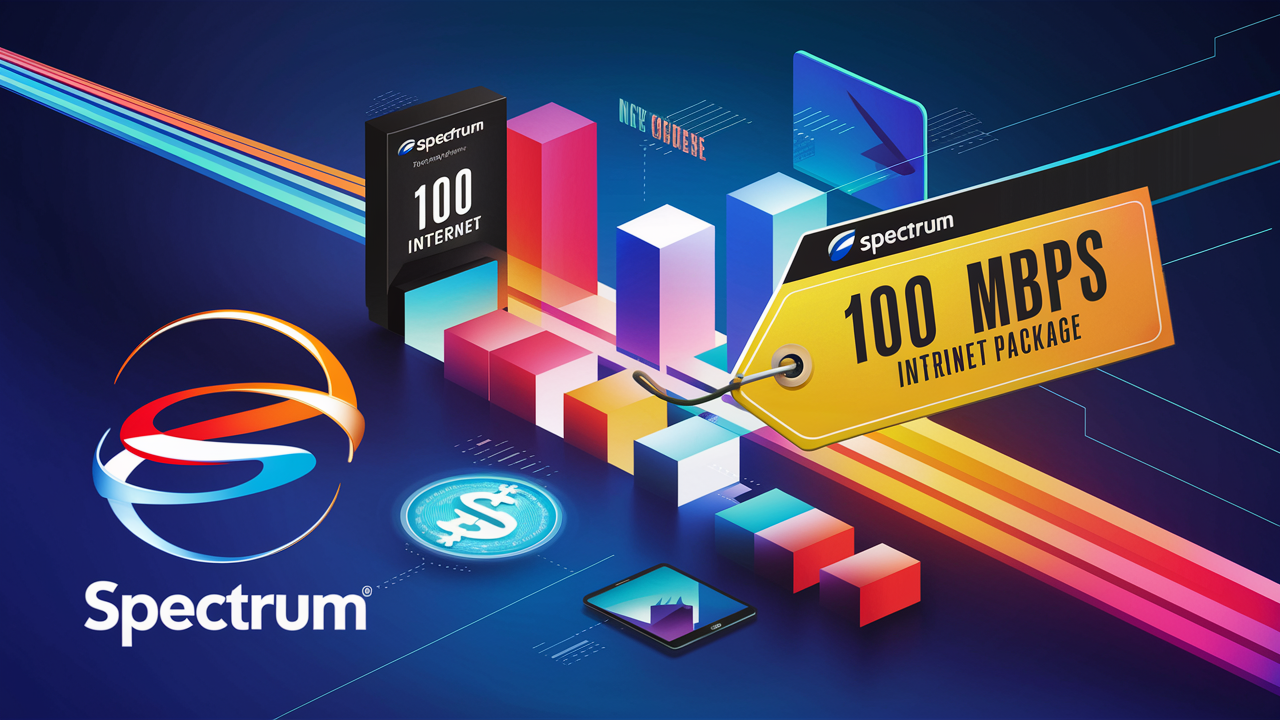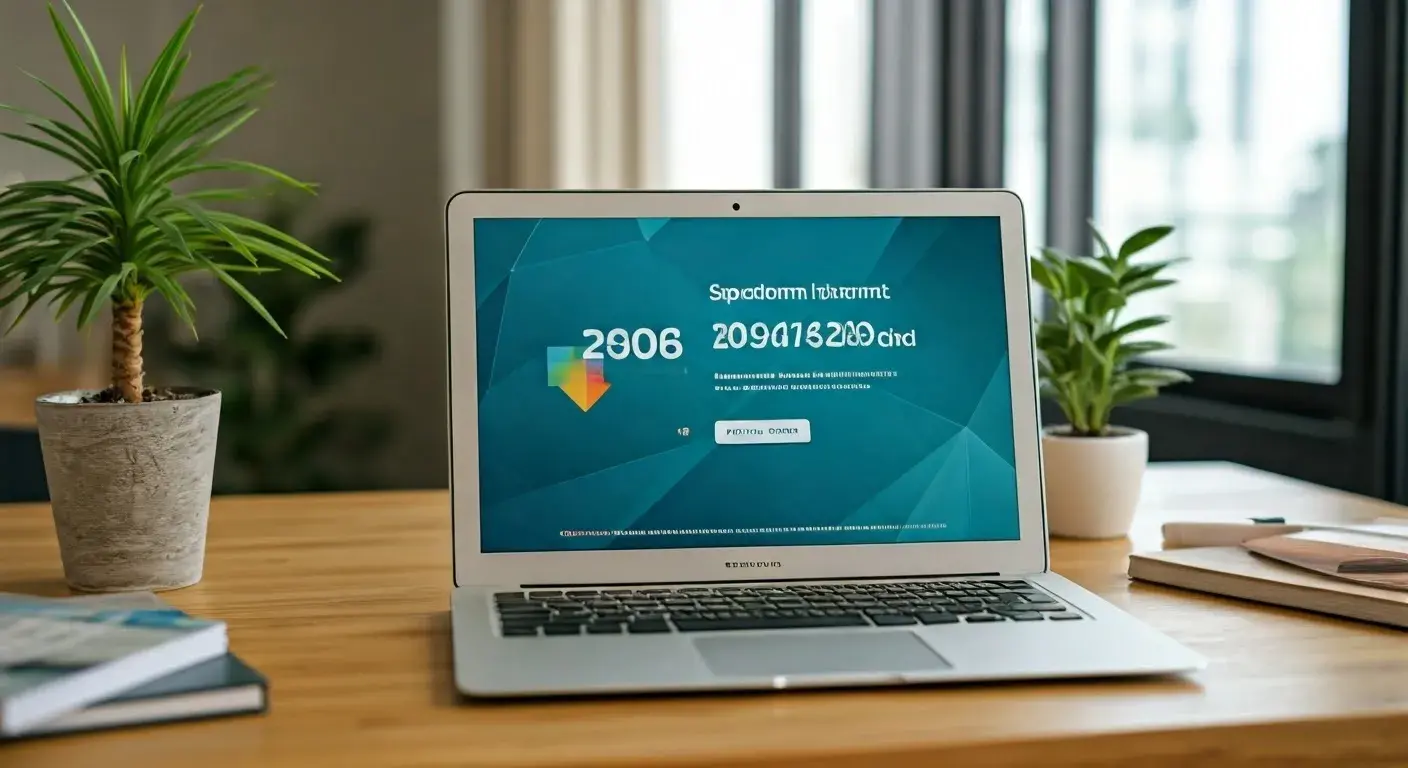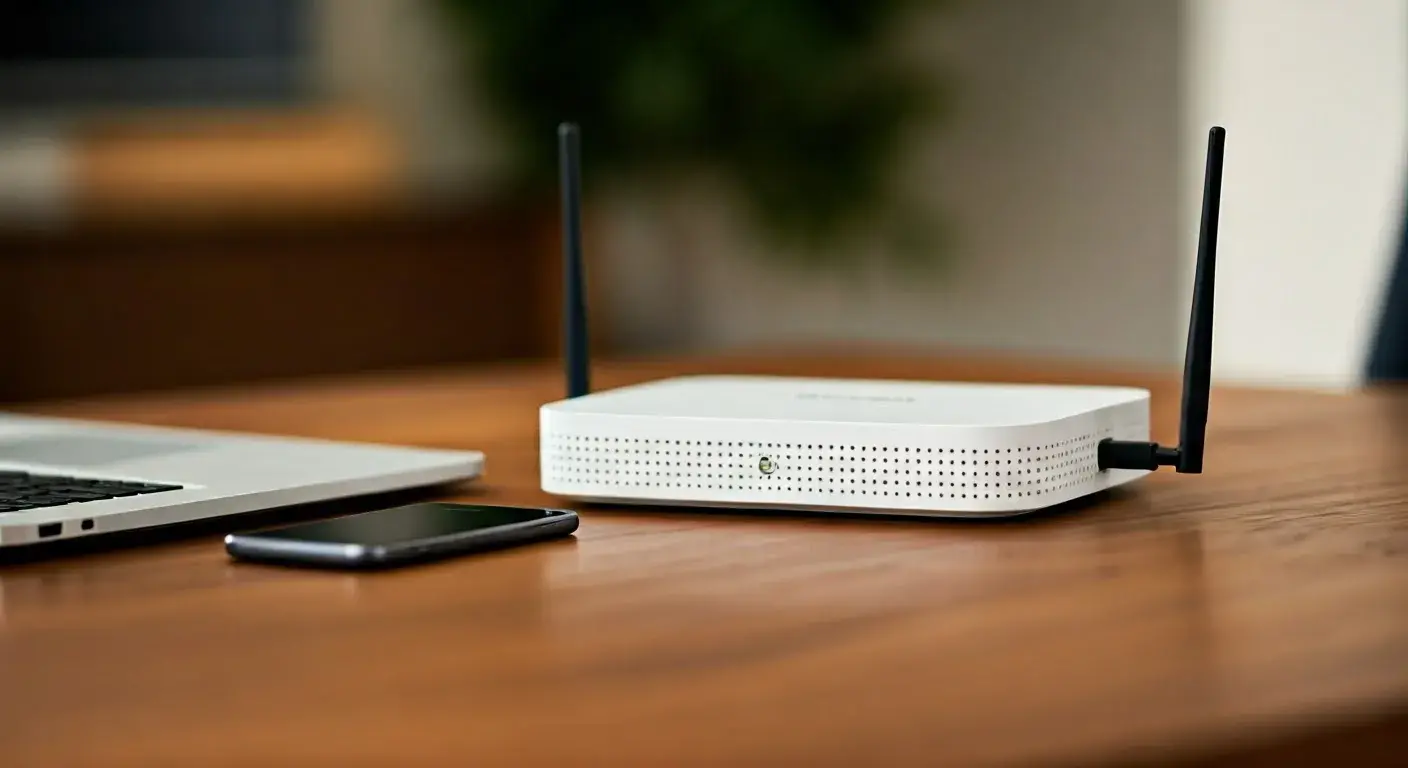Spectrum 100 Mbps Price: Unveiling the Best Deals

Discover the true cost of Spectrum's popular 100 Mbps internet plan. This comprehensive guide breaks down pricing, reveals potential savings, and helps you secure the best deal for your home in 2025, ensuring you get reliable, high-speed internet without overpaying.
Understanding Spectrum 100 Mbps: The Sweet Spot for Many Households
In the ever-evolving landscape of internet service, finding the right balance between speed, reliability, and cost is paramount. For a significant portion of American households, Spectrum's 100 Mbps internet plan often hits this sweet spot. This speed tier is frequently lauded for its ability to handle the daily digital demands of an average family, from streaming high-definition content and online gaming to supporting multiple devices simultaneously. But what exactly does "100 Mbps" mean in practical terms, and how does its pricing stack up in 2025? This section delves into the core of what makes this plan so appealing and sets the stage for understanding its associated costs and value.
The term "Mbps" stands for Megabits per second, a unit of measurement for data transfer speed. A 100 Mbps download speed means that, theoretically, you could download a 100-megabyte file in approximately 8 seconds. While theoretical maximums are rarely achieved due to various network factors, a consistent 100 Mbps download speed is more than sufficient for most common internet activities. Upload speeds, while often lower than download speeds on residential plans, are also crucial for tasks like video conferencing, uploading large files, and online gaming. Spectrum's 100 Mbps plan typically offers a respectable upload speed that complements the download capability, ensuring a well-rounded online experience.
Why is this particular speed so popular? It caters to a wide spectrum of users. For a single individual, 100 Mbps is overkill, allowing for seamless multitasking and future-proofing. For a family of four, it means one person can be streaming Netflix in 4K, another can be on a video call for work, a third can be playing an online game, and a fourth can be browsing the web or doing homework, all without significant buffering or lag. This versatility makes the 100 Mbps plan a go-to choice for those who want robust performance without the premium price tag often associated with gigabit speeds.
As we move further into 2025, the demand for faster and more reliable internet continues to grow. Smart home devices are becoming more prevalent, requiring constant connectivity. Remote work and online education have transitioned from temporary solutions to permanent fixtures for many, necessitating stable and robust internet connections. Spectrum's 100 Mbps plan has remained a competitive offering because it effectively meets these increasing demands without forcing consumers into the more expensive, higher-tier plans. Understanding the capabilities of this plan is the first step in evaluating its pricing and ensuring you're getting the best possible value.
The appeal of the 100 Mbps plan also lies in its perceived simplicity. Unlike higher-tier plans that might come with complex bundles or introductory offers that expire quickly, the 100 Mbps plan is often presented as a straightforward, no-frills option for reliable internet. However, as we will explore, the actual price you pay can vary significantly based on several factors. This guide aims to demystify these variations and empower you to make an informed decision. By understanding what Spectrum's 100 Mbps plan offers and the variables that affect its cost, you can confidently navigate the options and secure the best deals available in 2025.
Key Factors Influencing Spectrum 100 Mbps Pricing
The advertised price for Spectrum's 100 Mbps internet plan is rarely the final figure you'll see on your bill. Several dynamic factors come into play, influencing the cost and determining whether you're getting a truly competitive deal. Understanding these elements is crucial for effective negotiation and for avoiding unexpected charges. In 2025, these factors remain consistent, requiring a keen eye from consumers looking for the best value.
1. New Customer Promotions vs. Existing Customer Rates
This is perhaps the most significant differentiator in Spectrum's pricing strategy. New customers are almost always offered introductory promotional rates that are substantially lower than the standard, non-promotional pricing. These deals are designed to attract new subscribers and can include discounted monthly fees for a period of 12, 24, or even 36 months. For instance, a 100 Mbps plan that normally costs $70 per month might be advertised for as low as $49.99 for the first year for new sign-ups. This significant difference means that if you're an existing customer looking to switch to or upgrade to the 100 Mbps plan, you might not qualify for these attractive introductory offers and will likely face higher standard rates unless you negotiate effectively or are part of a specific loyalty program.
2. Contract Length and Commitment
While Spectrum generally advertises no-contract internet services, there can be implicit or explicit commitments that affect pricing. Some promotional offers are tied to a specific contract duration. If you opt out of a contract or decide to cancel service before the agreed-upon term, early termination fees may apply. Conversely, some providers might offer slightly better rates for customers willing to sign a longer-term agreement, although Spectrum's focus has been on flexibility. It's essential to clarify whether any advertised price is contingent on signing a contract and understand the terms and conditions associated with it.
3. Bundling Services
Spectrum, like many other internet service providers, often incentivizes customers to bundle multiple services, such as internet, TV, and mobile phone plans. Bundling can lead to significant savings compared to subscribing to each service individually. For example, a bundle that includes the 100 Mbps internet plan, a basic TV package, and a mobile line might be priced more attractively than just the internet plan alone. However, it's critical to evaluate if you genuinely need the bundled services. Sometimes, the perceived savings from a bundle might not be worth paying for services you don't use or need.
4. Equipment Rental Fees
Internet service providers typically charge a monthly fee for modem and router rentals. Spectrum is no exception. While these fees are usually modest, they add up over time. In 2025, these equipment rental fees can range from $5 to $15 per month, depending on the type of equipment provided. To save money, consider purchasing your own compatible modem and router. This upfront investment can lead to substantial long-term savings, as you'll no longer be subject to monthly rental charges. Ensure any equipment you purchase is on Spectrum's approved list to guarantee compatibility and avoid service issues.
5. Installation and Activation Fees
When you first sign up for Spectrum service, you might encounter one-time charges for installation and activation. These fees can vary depending on your location and the type of installation required (e.g., self-installation versus professional installation). While some promotions might waive these fees, they are a common cost associated with starting new service. Always inquire about potential fees and any promotions that could cover them. Self-installation kits are often provided free of charge and can be a great way to avoid professional installation fees if your home is already wired for Spectrum service.
6. Geographic Location and Local Competition
Internet pricing is not uniform across the country. The cost of Spectrum's 100 Mbps plan can differ based on your specific geographic location. Areas with higher competition from other internet providers (e.g., fiber optic providers like Verizon Fios or AT&T Fiber) may see Spectrum offering more aggressive pricing and promotions to retain or attract customers. Conversely, in areas where Spectrum has limited competition, prices might be higher. Researching local competitors and their offerings is a vital step in understanding if Spectrum's price is truly competitive in your area.
7. Data Caps (or Lack Thereof)
While Spectrum generally advertises unlimited data on its internet plans, it's always wise to confirm this. Some providers impose data caps, and exceeding them can result in throttled speeds or additional charges. Spectrum's commitment to unlimited data is a significant selling point, especially for heavy internet users. However, understanding the nuances of their data policies ensures you won't face unexpected limitations or costs. This is a factor that contributes to the overall value proposition of their 100 Mbps plan.
By understanding these influencing factors, consumers can approach their Spectrum 100 Mbps service with greater clarity. It allows for more informed comparisons, better negotiation strategies, and ultimately, a more cost-effective internet solution. The next section will dive into how to actively find and secure the best deals in 2025, leveraging this knowledge.
Unveiling the Best Deals for Spectrum 100 Mbps in 2025
Securing the best possible price for Spectrum's 100 Mbps internet plan in 2025 requires a proactive approach. The advertised rates are often just a starting point, and by employing a few strategic tactics, you can significantly reduce your monthly bill. This section outlines the most effective methods for uncovering and locking in those coveted Spectrum 100 Mbps deals.
1. Leverage New Customer Promotions
As previously mentioned, new customer deals are where the most substantial savings are typically found. If you are a new subscriber to Spectrum or haven't had service at your address for a certain period (often 30-90 days), you are prime to take advantage of these offers. These promotions are frequently advertised on Spectrum's official website, through direct mailers, and via online advertising. Look for deals that offer a fixed price for an extended period (12-24 months) and clearly state the download and upload speeds included. For 2025, expect to see offers for 100 Mbps starting in the $49.99 to $65.00 range for the first year, often with free installation or waived activation fees.
Actionable Tip: If you are an existing customer, consider the "new customer" loophole. If you have a family member or roommate who can sign up as the primary account holder, you might be able to secure the new customer rate. Ensure you understand Spectrum's policies regarding multiple accounts at the same address.
2. Negotiate with Customer Service
Don't underestimate the power of negotiation. Even if you are an existing customer or the promotional period for your new customer deal is ending, calling Spectrum's customer service and inquiring about current promotions or retention offers can yield positive results. Be polite but firm. Mention competitor pricing in your area, express your satisfaction with the service but concern about the rising cost, and ask if there are any available discounts or plan upgrades that could be offered at a similar or lower price. Customer retention specialists are often empowered to offer discounts or better plans to keep you from switching providers.
Example Conversation Snippet: "Hi, I've been a loyal Spectrum customer for three years, and I'm very happy with the 100 Mbps service. However, I've noticed my bill has increased, and I'm exploring options. I saw that [Competitor Name] is offering a similar speed for $55 in my area. Is there any way Spectrum can match that or offer me a better promotional rate to keep my business?"
3. Explore Bundling Options Strategically
While it's crucial to only bundle what you need, strategic bundling can indeed lead to savings. Spectrum often offers attractive bundles that combine internet, TV, and sometimes mobile services. If you are considering upgrading your TV package or adding a mobile line, investigate Spectrum's bundle deals. A common 2025 bundle might include 100 Mbps internet, a basic TV package with around 125 channels, and potentially a mobile line for around $100-$130 per month, which can be a significant saving compared to purchasing these services separately.
Tip: Always ask for the price breakdown of each service within the bundle. This helps you understand the actual discount applied and assess the value of each component.
4. Purchase Your Own Equipment
As highlighted earlier, Spectrum charges a monthly fee for modem and router rentals, typically around $10-$15 per month. Investing in your own compatible modem and router can save you hundreds of dollars over the life of your service. A quality DOCSIS 3.0 or DOCSIS 3.1 modem can be purchased for $70-$150, and a good Wi-Fi router for another $50-$150. Ensure the modem you buy is on Spectrum's approved modem list to avoid compatibility issues. This upfront cost is quickly recouped through monthly savings.
Example: If you save $12 per month on equipment rental, purchasing a $120 modem and a $100 router ($220 total) would pay for itself in less than 10 months ($220 / $12 = ~18.3 months, but if you get a deal on equipment, it's faster). This is a smart long-term strategy for any Spectrum customer.
5. Look for Limited-Time Offers and Seasonal Promotions
Internet providers often run special promotions during peak sales periods like Black Friday, Cyber Monday, or back-to-school seasons. While these are not always tied to specific speed tiers, they can offer significant discounts or added benefits like free equipment or waived fees. Keep an eye on Spectrum's website and reputable tech deal sites throughout the year for these limited-time opportunities.
6. Utilize Comparison Websites and Third-Party Retailers
Many third-party websites specialize in comparing internet plans and prices from various providers, including Spectrum. These sites can sometimes highlight exclusive deals or promotions not readily advertised on Spectrum's direct site. Additionally, some retailers might offer their own promotions for signing up for Spectrum service through them. However, always verify the legitimacy and terms of any offer found through third-party sources.
7. Understand Contract Terms and Price Increases
When signing up for a promotional deal, always understand the duration of the promotional price and what the standard rate will be afterward. Spectrum's promotional periods typically last 12 or 24 months. Be prepared for a price increase once this period ends. Knowing this in advance allows you to re-evaluate your plan and potentially renegotiate or switch providers before the higher rate kicks in. Some providers may also include annual price increases in their terms of service, so read the fine print carefully.
By actively employing these strategies, consumers can navigate the pricing landscape of Spectrum's 100 Mbps plan and secure the most advantageous deals available in 2025. The key is to be informed, persistent, and willing to explore all available avenues for savings.
Comparing Spectrum 100 Mbps Plans and Competitors
While this guide focuses on Spectrum's 100 Mbps offering, understanding how it stacks up against competitors in terms of price, performance, and features is essential for making the most informed decision. In 2025, the internet market is dynamic, with various technologies and pricing models vying for consumer attention. This section provides a comparative overview to help you assess Spectrum's value proposition.
Spectrum 100 Mbps: The Baseline
Spectrum's 100 Mbps plan, often marketed as "Internet Ultra" or a similar tier, typically offers download speeds of up to 100 Mbps and upload speeds that can range from 10 Mbps to 20 Mbps. Key advantages include:
- Unlimited Data: Spectrum generally offers unlimited data, a significant plus for heavy streamers and downloaders.
- No Annual Contracts: Provides flexibility for consumers who prefer not to be locked into long-term commitments.
- Widespread Availability: Spectrum's cable network covers a vast portion of the United States, making it accessible to many.
- Consistent Performance: Cable internet generally offers stable speeds, especially in areas with less network congestion.
The price for this plan, as discussed, can range from $49.99 to $75+ per month, heavily influenced by promotions, location, and whether you're a new or existing customer. Equipment rental fees are an additional cost unless you provide your own.
Competitor Landscape in 2025
The primary competitors to Spectrum's cable internet include fiber optic providers, other cable providers, and DSL providers. Each offers a different set of strengths and weaknesses.
Fiber Optic Providers (e.g., Verizon Fios, AT&T Fiber, Google Fiber)
Fiber optic internet is generally considered the gold standard for speed and reliability. It uses light signals to transmit data, offering symmetrical download and upload speeds (meaning upload speeds match download speeds) and significantly higher bandwidth potential.
- Speeds: Fiber plans often start at 300 Mbps or 500 Mbps and go up to gigabit speeds (1000 Mbps) or even higher. While direct 100 Mbps fiber plans are less common, if available, they would likely be priced similarly or slightly higher than Spectrum's 100 Mbps, but with superior upload speeds.
- Pricing: Introductory offers for 300-500 Mbps fiber plans can range from $50 to $70 per month, often with longer promotional periods (24-36 months) and included equipment. Gigabit plans typically start around $70-$90.
- Pros: Superior speed and latency, symmetrical speeds, generally more reliable, less susceptible to congestion.
- Cons: Availability is limited to specific areas where fiber infrastructure has been laid, often requires a contract.
Comparison Note: If fiber is available in your area, even a slightly higher-priced fiber plan with symmetrical speeds might offer better overall value for demanding users, especially for tasks like large file uploads, professional video conferencing, or competitive online gaming.
Other Cable Providers (e.g., Xfinity/Comcast)
Other cable providers offer internet services through similar coaxial cable infrastructure as Spectrum. Their offerings can be quite competitive.
- Speeds: Providers like Xfinity often have plans around the 100 Mbps mark, sometimes branded as "Performance Starter" or similar. They may also offer plans slightly below 100 Mbps for budget-conscious consumers.
- Pricing: Introductory pricing for comparable 100 Mbps plans from Xfinity can be in the $50-$70 range for new customers, often with similar promotional durations.
- Pros: Similar availability to Spectrum in many regions, unlimited data options, no-contract plans are often available.
- Cons: Data caps can be a concern on some lower-tier plans, pricing can escalate after promotions, equipment rental fees apply.
Comparison Note: When comparing Spectrum to other cable providers, pay close attention to the exact speeds offered (download and upload), data cap policies, contract requirements, and equipment fees. Small differences in these areas can impact the overall value.
DSL Providers (e.g., CenturyLink/Lumen, Windstream)
DSL (Digital Subscriber Line) internet uses existing telephone lines to transmit data. It is generally the slowest and least reliable of the major internet technologies.
- Speeds: DSL speeds are highly dependent on the distance from the provider's central office. Plans often range from 10 Mbps to 100 Mbps, but achieving consistent 100 Mbps speeds via DSL is rare and often not competitive with cable or fiber.
- Pricing: DSL plans can sometimes be cheaper, with introductory offers for slower speeds starting as low as $30-$40 per month. Higher-speed DSL plans might approach Spectrum's pricing but with significantly lower performance.
- Pros: Wide availability in rural areas where cable and fiber are not present, often uses existing phone lines.
- Cons: Significantly slower speeds, especially upload speeds; performance degrades with distance; more susceptible to network congestion and interference.
Comparison Note: DSL is typically only a viable option if cable or fiber is unavailable. For users needing 100 Mbps, DSL is unlikely to meet expectations for speed and reliability.
Making the Choice: What to Consider
When comparing Spectrum's 100 Mbps plan to alternatives in 2025, consider the following:
- Actual Needs: Do you truly need 100 Mbps? For basic browsing, email, and occasional streaming, a lower speed might suffice and save money. For households with many connected devices, heavy streaming, or online gaming, 100 Mbps is a good starting point, but higher speeds might be beneficial if affordable.
- Upload vs. Download: If your online activities heavily involve uploading content (e.g., video editing, large file transfers, streaming yourself), fiber's symmetrical speeds are a significant advantage.
- Availability: The best plan is often the best one available at your specific address.
- Long-Term Costs: Factor in equipment rental fees, potential price increases after promotions, and contract terms.
- Customer Service and Reliability: Research local reviews for internet providers regarding their customer service responsiveness and network reliability.
By understanding these comparisons, you can better evaluate if Spectrum's 100 Mbps plan, and the deals you find for it, represent the best value for your specific circumstances in 2025.
Maximizing Your Spectrum 100 Mbps Investment: Tips and Tricks
Once you've secured your Spectrum 100 Mbps internet plan, the journey to maximizing its value doesn't end. This section provides practical tips and tricks to ensure you're getting the most out of your service, optimizing your home network, and avoiding common pitfalls that can diminish your online experience or increase your costs.
1. Optimize Your Home Wi-Fi Network
A 100 Mbps internet connection is only as good as the Wi-Fi network delivering it throughout your home. Even with a fast plan, a poorly configured Wi-Fi setup can lead to slow speeds, dead zones, and frustration.
- Router Placement: Position your router in a central, open location, away from obstructions like thick walls, metal objects, and appliances that can cause interference (e.g., microwaves, cordless phones). Elevating the router can also improve signal distribution.
- Wi-Fi Channel Selection: Routers broadcast on different channels. If you live in a densely populated area, your neighbors' Wi-Fi networks can interfere. Most modern routers automatically select the best channel, but you can manually access your router's settings to scan for and select a less congested channel, especially on the 2.4 GHz band.
- Use the 5 GHz Band: If your router is dual-band (offering both 2.4 GHz and 5 GHz), use the 5 GHz band for devices that are closer to the router and require higher speeds (like streaming devices or gaming consoles). The 2.4 GHz band has a longer range but is more prone to interference and offers lower speeds.
- Update Router Firmware: Regularly check for and install firmware updates for your router. These updates often include performance improvements, security patches, and bug fixes.
- Consider a Mesh Wi-Fi System: For larger homes or homes with many dead zones, a mesh Wi-Fi system can provide consistent coverage. These systems use multiple nodes to create a single, seamless Wi-Fi network, eliminating dead spots and ensuring reliable speeds throughout your property.
2. Invest in Quality Networking Equipment (If Not Renting)
If you've opted to purchase your own modem and router, choosing the right equipment is crucial. For a 100 Mbps plan, a DOCSIS 3.0 modem is generally sufficient, but a DOCSIS 3.1 modem offers future-proofing and better performance. Ensure your router is capable of delivering Wi-Fi speeds that can at least approach your 100 Mbps internet speed, especially if you have multiple devices connecting wirelessly.
Recommendation: Look for routers with Wi-Fi 5 (802.11ac) or Wi-Fi 6 (802.11ax) standards for optimal performance with modern devices.
3. Monitor Your Internet Speed
Periodically test your internet speed to ensure you are receiving the speeds you are paying for. Use reputable speed test websites like Speedtest.net by Ookla or Fast.com (powered by Netflix). Run tests at different times of the day and connect devices directly to the router via an Ethernet cable for the most accurate results. If you consistently see speeds significantly lower than 100 Mbps, it's time to contact Spectrum support.
When to Test: Test during peak hours (evenings and weekends) when network congestion is highest, and during off-peak hours to see the difference.
4. Understand and Manage Data Usage (If Applicable)
While Spectrum generally offers unlimited data, it's always wise to be aware of any potential changes to their policies or if you are on a plan that might have specific usage guidelines. If you have multiple devices streaming high-definition content simultaneously, or if you frequently download large files, you are a heavy user. While Spectrum doesn't typically enforce data caps on its standard plans, understanding your household's usage patterns can help you avoid potential future issues or inform decisions about upgrading if your needs increase.
5. Secure Your Network
Protect your internet connection from unauthorized access and cyber threats. This is particularly important with a robust connection like 100 Mbps, which can be an attractive target for malicious actors.
- Strong Wi-Fi Password: Use a strong, unique password for your Wi-Fi network, utilizing a mix of uppercase and lowercase letters, numbers, and symbols. Avoid easily guessable passwords.
- Change Default Router Credentials: Always change the default administrator username and password for your router. These are often publicly known and can be a backdoor for hackers.
- Enable WPA2 or WPA3 Encryption: Ensure your Wi-Fi network is using the most secure encryption protocol available (WPA2 or WPA3).
- Consider a VPN: For enhanced privacy and security, especially when accessing sensitive information or public Wi-Fi, consider using a Virtual Private Network (VPN).
6. Troubleshoot Common Issues Proactively
Many common internet issues can be resolved with simple troubleshooting steps:
- Restart Your Modem and Router: This is the first and often most effective troubleshooting step. Unplug both devices, wait 30-60 seconds, and plug them back in, starting with the modem.
- Check Connections: Ensure all cables are securely connected to your modem, router, and wall outlet.
- Isolate the Problem: Determine if the issue affects all devices or just one. If it's a single device, the problem likely lies with that device. If it affects all devices, the issue is more likely with your internet service or network equipment.
7. Stay Informed About Spectrum's Offerings
The internet service landscape is constantly changing. Periodically check Spectrum's website or contact customer service to see if there are any new promotions, plan upgrades, or technology improvements that could benefit you. As your needs evolve, or as competitors introduce new offers, it's wise to re-evaluate your current plan to ensure it remains the best value.
By implementing these tips, you can ensure your Spectrum 100 Mbps internet plan delivers consistent performance, remains secure, and provides the best possible value for your household's needs in 2025 and beyond.
Troubleshooting and Support for Spectrum Internet
Even with the best internet service, occasional issues can arise. Knowing how to effectively troubleshoot common problems and access Spectrum's support resources can save you time and frustration. This section guides you through common troubleshooting steps and outlines how to get help when you need it.
Common Spectrum Internet Issues and Solutions
Here are some of the most frequent problems Spectrum users encounter and how to address them:
1. No Internet Connection
Symptoms: No Wi-Fi signal, devices unable to connect to the internet, or a "no internet" error message.
Troubleshooting Steps:
- Check Modem/Router Lights: Observe the indicator lights on your modem and router. Consult your equipment's manual or Spectrum's online resources to understand what each light signifies. A solid "Online" or "Internet" light usually indicates a good connection to Spectrum's network. Blinking lights might indicate a connection issue.
- Power Cycle Equipment: Unplug the power cords from both your modem and router. Wait for at least 60 seconds. Plug the modem back in first and wait for it to fully boot up (all lights stable). Then, plug in your router and wait for it to boot up.
- Check Physical Connections: Ensure the coaxial cable is securely screwed into the back of the modem and the wall outlet. Verify that the Ethernet cable connecting the modem to the router is firmly plugged in at both ends.
- Test with a Wired Connection: Connect a computer directly to the modem (bypassing the router) using an Ethernet cable. If you get internet access this way, the issue is likely with your router or Wi-Fi.
- Bypass the Router: If you have a separate modem and router, try connecting a computer directly to the modem via Ethernet. If you get internet, the problem is with your router.
2. Slow Internet Speeds
Symptoms: Websites load slowly, videos buffer frequently, online games lag, slow download/upload speeds.
Troubleshooting Steps:
- Run a Speed Test: As mentioned earlier, use reliable speed test websites. Connect via Ethernet for the most accurate reading.
- Check Your Plan Speed: Ensure your speed test results are reasonably close to your subscribed 100 Mbps plan. Minor variations are normal, but consistently lower speeds warrant investigation.
- Restart Modem and Router: A simple power cycle can often resolve temporary slowdowns.
- Check for Network Congestion: If multiple devices are heavily using the internet simultaneously (streaming, downloading, gaming), it can impact speeds for all devices. Try disconnecting some devices to see if performance improves.
- Router Placement and Interference: Ensure your router is centrally located and not experiencing interference from other devices or physical obstructions.
- Update Router Firmware: Outdated firmware can impact performance.
- Consider Equipment Upgrade: If you own older networking equipment, it might be a bottleneck.
3. Intermittent Connection Drops
Symptoms: The internet connection frequently disconnects and then reconnects, often for short periods.
Troubleshooting Steps:
- Check Cable Connections: Loose coaxial or Ethernet cables are a common cause of intermittent drops. Ensure they are tight and undamaged.
- Power Cycle Equipment: This can resolve temporary glitches causing drops.
- Check for Signal Issues: Spectrum can remotely check your signal levels. If you suspect a signal problem, contacting them is the best approach.
- Identify External Factors: Consider if external events like power fluctuations or severe weather could be impacting the service.
4. Wi-Fi Issues (Weak Signal, Dead Zones)
Symptoms: Poor Wi-Fi signal strength in certain areas of your home, devices frequently losing Wi-Fi connection.
Troubleshooting Steps:
- Router Placement: Relocate your router to a more central and open location.
- Adjust Antennas: If your router has external antennas, try adjusting their position.
- Use the 5 GHz Band: For devices closer to the router, switch to the 5 GHz band for potentially faster and more stable connections.
- Consider a Wi-Fi Extender or Mesh System: For larger homes, these devices are designed to extend Wi-Fi coverage.
- Check Router Settings: Ensure your router is broadcasting on appropriate channels and using secure encryption (WPA2/WPA3).
Accessing Spectrum Support
If you've exhausted self-troubleshooting steps or suspect a more complex issue, Spectrum offers several support channels:
- Spectrum Website and App: Spectrum's official website and mobile app are excellent resources. They often feature extensive knowledge bases, FAQs, troubleshooting guides, and diagnostic tools. You can also manage your account, view bills, and schedule appointments through these platforms.
- Online Chat Support: Many users find live chat support to be a quick and efficient way to get answers to their questions or resolve minor issues without having to make a phone call.
- Phone Support: Spectrum provides customer service and technical support via phone. The main customer service number can usually be found on your bill or on their website. Be prepared to provide your account information and a description of the issue.
- In-Person Support (Service Centers): In some areas, Spectrum may have physical service centers where you can get in-person assistance, pick up equipment, or make payments.
- Social Media Support: Spectrum often has a presence on social media platforms like Twitter, where they may offer support or direct you to the right resources.
When Contacting Support:
- Have your account number ready.
- Be prepared to describe the problem clearly and the troubleshooting steps you've already taken.
- Note down any error messages you are receiving.
- Ask for a reference number for your support call or chat session.
By understanding common issues and knowing how to access Spectrum's support network, you can ensure a smoother and more reliable internet experience with your 100 Mbps plan.
In conclusion, Spectrum's 100 Mbps internet plan remains a compelling choice for many households in 2025, offering a robust balance of speed, reliability, and value. By understanding the factors influencing its price – from new customer promotions and bundling options to equipment rental fees and local competition – you are empowered to seek out the best deals. Remember that the advertised price is often just the starting point; diligent research, strategic negotiation, and smart choices regarding equipment and services can lead to significant savings. Furthermore, optimizing your home Wi-Fi, regularly monitoring your speeds, and knowing how to effectively troubleshoot common issues will ensure you maximize the performance and longevity of your investment. Don't hesitate to leverage Spectrum's support channels when needed, ensuring any technical hiccups are resolved promptly. By following the insights in this guide, you can confidently secure and enjoy a high-performing Spectrum 100 Mbps connection that perfectly suits your needs and budget.





